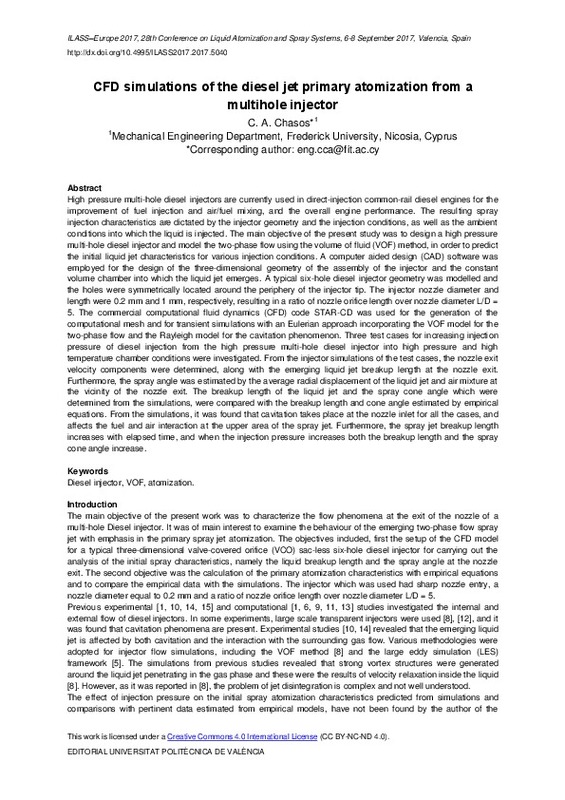JavaScript is disabled for your browser. Some features of this site may not work without it.
Buscar en RiuNet
Listar
Mi cuenta
Estadísticas
Ayuda RiuNet
Admin. UPV
CFD simulations of the diesel jet primary atomization from a multihole injector
Mostrar el registro completo del ítem
Chasos, C. (2017). CFD simulations of the diesel jet primary atomization from a multihole injector. En Ilass Europe. 28th european conference on Liquid Atomization and Spray Systems. Editorial Universitat Politècnica de València. 18-25. https://doi.org/10.4995/ILASS2017.2017.5040
Por favor, use este identificador para citar o enlazar este ítem: http://hdl.handle.net/10251/100354
Ficheros en el ítem
Metadatos del ítem
| Título: | CFD simulations of the diesel jet primary atomization from a multihole injector | |
| Autor: | Chasos, Charalambos | |
| Fecha difusión: |
|
|
| Resumen: |
[EN] High pressure multi-hole diesel injectors are currently used in direct-injection common-rail diesel engines for the
improvement of fuel injection and air/fuel mixing, and the overall engine performance. The resulting ...[+]
|
|
| Palabras clave: |
|
|
| Derechos de uso: | Reconocimiento - No comercial - Sin obra derivada (by-nc-nd) | |
| ISBN: |
|
|
| Fuente: |
|
|
| DOI: |
|
|
| Editorial: |
|
|
| Versión del editor: | http://ocs.editorial.upv.es/index.php/ILASS/ILASS2017/paper/view/5040 | |
| Título del congreso: |
|
|
| Lugar del congreso: |
|
|
| Fecha congreso: |
|
|
| Tipo: |
|








